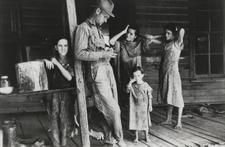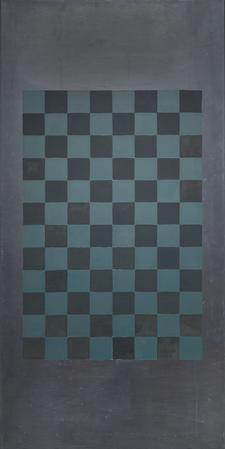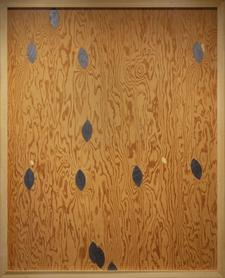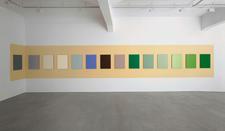
The Hall Art Foundation is pleased to announce an exhibition by American artist Sherrie Levine to be held at its galleries in Reading, Vermont from 11 May – 1 December 2024. Spanning over 30 years of her work, this survey includes photographs, paintings, and sculptures from many of Levine’s most acclaimed series which are central to her ongoing inquiry into notions of ownership, authorship, originality, and authenticity.
Levine rose to prominence as a member of the Pictures Generation, a loose group of artists based in New York in the late 1970s and early 1980s including Cindy Sherman, Robert Longo, David Salle, Richard Prince, and Barbara Kruger, among others. In varied ways, these artists all created work by appropriating and reusing existing images from popular culture, questioning the way that meanings become assigned to images, and how or why certain kinds of images are considered “art”. While many of her colleagues utilized images from popular culture and the mainstream media in their work, Levine borrowed her images directly from high art sources, and importantly, often from reproductions of artworks (in the form of bookplates and posters, for example), which are often the most common way that one experiences a well-known image.
The show includes works from one of Levine’s most acclaimed series, After Walker Evans, for which she photographed book reproductions of Evans' iconic photographs documenting the Great Depression of the 1930s in the rural American South. By claiming these existing photographs (and later, reproductions of paintings and sculptures by other artists) as her own, Levine breaks with conventional notions of art needing to be created by “the hand of the artist”, further raising questions about uniqueness, authenticity, and originality, and how these elements have traditionally been the basis for valuating works of art. Throughout her practice, Levine has chosen only to reproduce works by male “artist heroes” of classical Modernism as a way of examining how these artists have shaped the history of art, and as an effort to debunk traditional notions of the male artist as authority and/or genius. Levine’s use of the prefix After in her titles acknowledges the chronological precedence of these artists while also referring to the widely accepted practice in the history of art of making copies “after” established masterpieces. Levine’s “remakes” are never direct translations – they always differ from their source in size, materiality, technique, and sometimes in the depicted imagery itself.
In the mid-1980s, Levine began making easel-size paintings that did not copy but rather simulated the look of various modernist painting styles. Levine’s “generic abstractions” – comprised of striped or checkered patterns – evoke the formal repertoire and reductivism of abstract and minimalist painting and sculpture from the 1960s and 1970s, without explicitly referencing specific artists. In her later Knot paintings, Levine used inexpensive, commercially available plywood boards on which she painted the eye-shaped plugs that replace missing knots in different colors. Without referring directly to other artworks, Levine’s Knots evoke early collages and paintings by artists such as Pablo Picasso and Juan Gris, while humorously offering a play on words through the spoken similarity of “Knot Paintings” and “not paintings”.
Referring to the architect Le Corbusier, Levine’s installation, Salubra 7 (2007), consists of 14 monochromatic panels installed along a horizontal band of color painted directly onto the wall. In 1931 and 1959, Le Corbusier cooperated with the Swiss wallpaper company Salubra on collections of single colors intended as tools for architects. The colors chosen by Le Corbusier were themselves derived from important paintings in the history of art, including the palette of the Italian Renaissance painter, Raphael. Le Corbusier organized his color charts into twelve “keyboards”, with each color mood consisting of fourteen shades against three possible background colors. The monochrome panels that make up Levine’s Salubra 7 are based off Le Corbusier’s Sand I keyboard, as documented in his book, Polychromie architecturale. In Salubra 7, Levine takes Le Corbusier’s painting-inspired color chart and returns it to the realm of painting, highlighting the subtle effects that different combinations of colors against distinct backgrounds can have.
Born in 1947 in Hazleton, Pennsylvania, Levine studied at the University of Wisconsin, Madison, where she received her M.F.A. in 1973. Levine’s work has been the subject of numerous solo exhibitions in important museums around the world, including most recently at Neues Museum, State Museum for Art and Design in Nuremberg (2016); Portland Art Museum, Oregon (2013); the Whitney Museum of American Art, New York (2011); Museum Haus Lange, Krefeld, Germany (2010); San Francisco Museum of Modern Art (2009 and 1991); and the Georgia O’Keeffe Museum, Santa Fe, New Mexico (2007). Levine’s works are included in major museums and public collections worldwide, including the Art Institute of Chicago; Centre Georges Pompidou, Paris; Hirshhorn Museum and Sculpture Garden, Washington, DC; Institute of Contemporary Art, Boston; Louisiana Museum of Modern Art, Humlebæk, Denmark; Los Angeles County Museum of Art; The Metropolitan Museum of Art, New York; The Museum of Modern Art, New York; The National Museum of Art, Osaka; San Francisco Museum of Modern Art; Solomon R. Guggenheim Museum, New York; Tate, London; and the Whitney Museum of American Art, New York. An exhibition focused on her works from 1977-1987 and accompanied by a new publication will open at the Aspen Art Museum in the summer of 2025. Levine lives and works in New York.
Hall Art Foundation
544 VT Route 106
Reading, VT 05062
United States
For more information and images, please contact the Foundation’s administrative office at info@hallartfoundation.org.

Sherrie Levine
After Walker Evans: 1, 1981
Gelatin silver photograph
6 x 9-1/2 in.
Hall Collection
© the artist

Sherrie Levine
Broad Stripe: 10, 1985
Casein and wax on mahogany
24 x 20 in.
Hall Collection
© the artist

Sherrie Levine
Double Lead Check: 3, 1989
Casein on lead
40 x 20 in.
Hall Collection.
© the artist

Sherrie Levine
Lead Knot: 2, 1987
Metallic paint on plywood in artist’s frame
52 x 42 in.
Hall Collection
© the artist

Sherrie Levine
Salubra 7, 2007
Oil on wood, in 14 parts
27 x 23-3/4 in. each
Hall Collection
© the artist